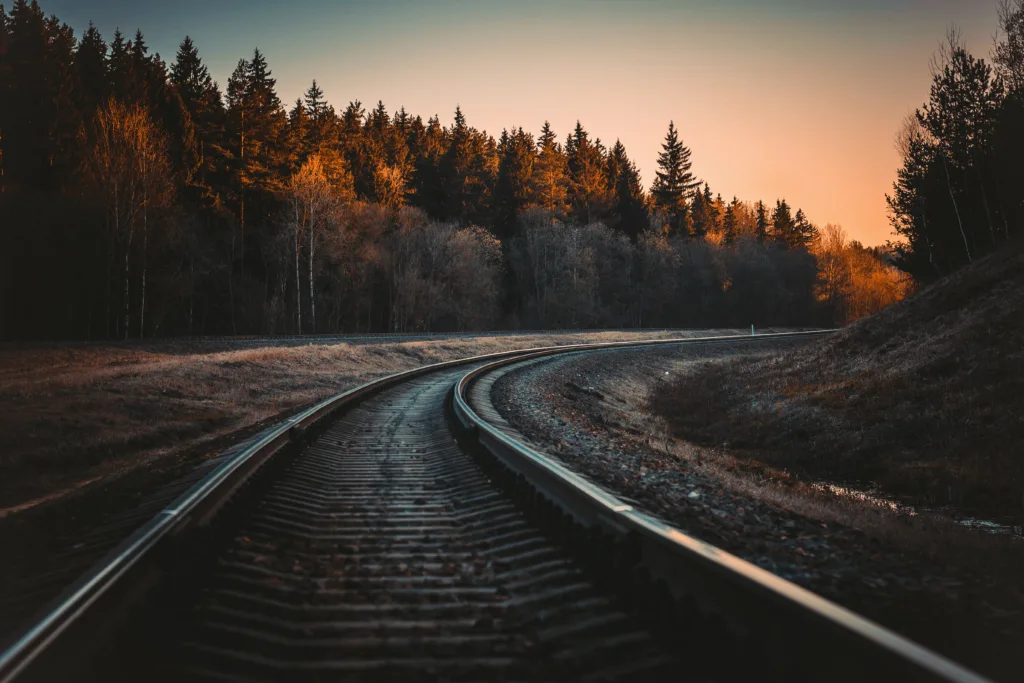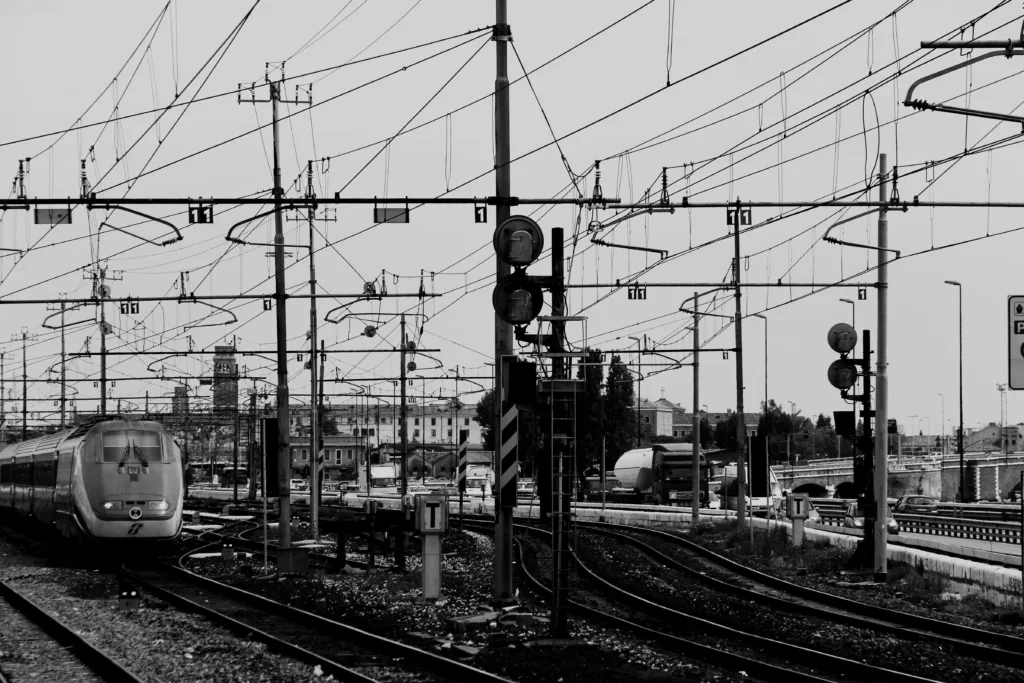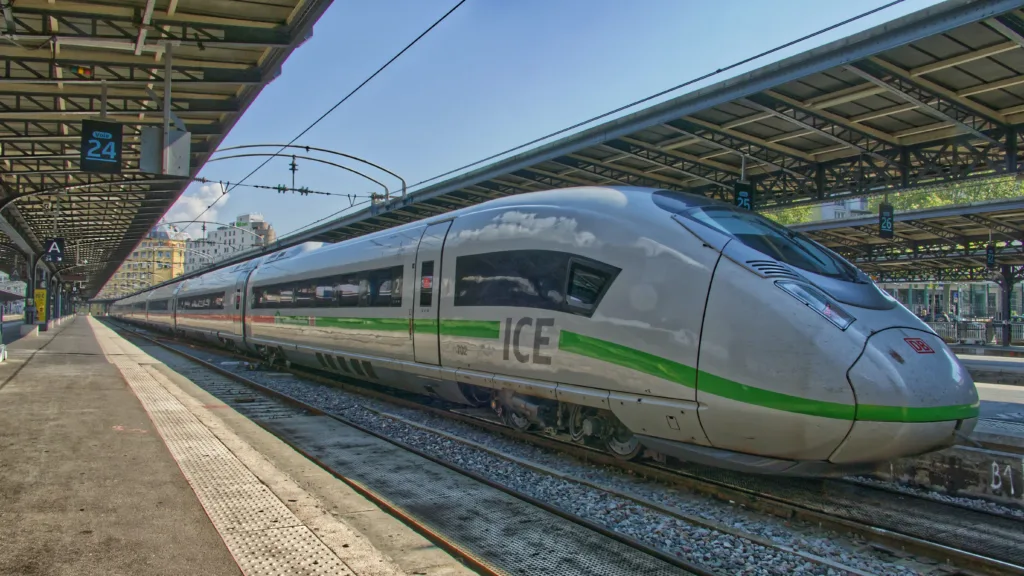
When you think of railway systems, the image of tracks extending into the horizon, connecting distant places, may come to mind. However, beyond the tracks themselves, there’s a crucial yet often overlooked component that plays a significant role in ensuring the safety and reliability of railway operations – guard rails. In this article, we will delve into the world of guard rails in railways, exploring their purpose, types, installation, maintenance, and the vital role they play in maintaining the smooth functioning of our rail systems.

Table of Contents
Introduction: The Importance of Guard Rails in Railways
Guard rails, often referred to as guide rails or check rails, are essential safety features in railway systems worldwide. Their primary purpose is to guide train wheels and prevent potential derailments, which could result in catastrophic accidents. Guard rails act as a safeguard, keeping trains on track and ensuring the safety of passengers, crew, and cargo.
Understanding Different Types of Guard Rails in Railways
There are several types of guard rails employed in railway systems, each serving a specific purpose. The three main types are fixed guard rails, spring-loaded guard rails, and movable guard rails.
2.1 Fixed Guard Rails in railways
Fixed guard rails are immovable structures that are firmly attached to the railway ties. They provide a constant guide for the train wheels and are often used in straight sections of tracks.
2.2 Spring-Loaded Guard Rails
Spring-loaded guard rails utilize a spring mechanism to allow slight flexibility. This type of guard rail is particularly useful in sections where trains need to switch tracks.
2.3 Movable Guard Rails
Movable guard rails offer the most flexibility and are often used in complex rail systems where multiple tracks intersect. They can be adjusted manually or automatically to accommodate varying train configurations.

The Installation Process
The proper installation of guard rails is crucial to their effectiveness. It involves several key steps to ensure precise alignment and stability.
3.1 Pre-Installation Assessment
Before installing guard rails, a thorough assessment of the track layout is conducted. This assessment helps determine the optimal locations for guard rails and identifies any potential challenges.
3.2 Aligning the Guard Rails
During installation, meticulous attention is given to aligning the guard rails accurately. Proper alignment is essential to ensure that train wheels make secure contact with the rails.
3.3 Securing the Rails in Place
Guard rails are securely fastened to the railway ties using bolts or other suitable fasteners. The fastening process requires precision and is carried out according to established guidelines.
Ensuring Longevity: Maintenance of Guard Rails
Regular maintenance is essential to extend the lifespan of guard rails and ensure their continued functionality.
4.1 Regular Inspections
Routine inspections are conducted to detect any signs of wear, damage, or misalignment. These inspections are typically scheduled and carried out by trained maintenance personnel.
4.2 Cleaning and Lubrication
Guard rails are cleaned and lubricated to prevent corrosion and ensure smooth movement. Lubrication also reduces friction between the train wheels and the rails.
4.3 Repair and Replacement
Damaged or worn-out guard rails are promptly repaired or replaced to prevent potential safety hazards. Maintenance teams are equipped to handle such tasks efficiently.

Guard Rails and Safety: Preventing Accidents
The role of guard rails in preventing accidents cannot be overstated. They contribute to safety in various ways.
5.1 Mitigating Derailments
Guard rails play a pivotal role in mitigating derailments by providing an additional guide for the wheels, especially in tight curves or areas with uneven tracks.
5.2 Reducing Impact Forces
In the unfortunate event of a collision, guard rails help reduce the impact forces, minimizing the damage to both the train and the tracks.
5.3 Curving and Stability
Guard rails are essential for maintaining stability when trains navigate curves. They prevent excessive lateral movement and ensure a smoother ride.
The Future of Guard Rails: Technological Advancements
As technology continues to advance, guard rails are also evolving to become more sophisticated and efficient.
6.1 Sensor-Integrated Guard Rails
Sensor technology is being integrated into guard rails to enable real-time monitoring of track conditions. This proactive approach enhances safety and enables predictive maintenance.
6.2 Automated Maintenance Systems
Automated systems are being developed to streamline the maintenance of guard rails. Drones and robotic devices can perform inspections and minor repairs, reducing the need for manual intervention.
Environmental Considerations
Guard rails not only contribute to safety but also have environmental implications.
7.1 Sustainable Materials
The choice of materials for guard rails can impact sustainability. Opting for recyclable and environmentally friendly materials can reduce the ecological footprint of rail systems.
7.2 Impact on Wildlife and Habitats
Railway systems can intersect with wildlife habitats. Properly designed guard rails can help mitigate the impact on local wildlife and preserve natural ecosystems.
Conclusion: Safeguarding Railways for Generations to Come
Guard rails are an integral part of modern railway systems, ensuring the safety and reliability of train operations. From preventing derailments to reducing impact forces, their role in maintaining the integrity of tracks and the well-being of passengers cannot be overstated. As technology advances, guard rails will continue to evolve, becoming even more efficient and environmentally friendly, ultimately safeguarding railways for generations to come.
FAQs (Frequently Asked Questions)
- Are guard rails the same as regular rails? No, guard rails serve a distinct purpose of guiding train wheels and preventing derailments, while regular rails provide the main track for trains to travel on.
- Can guard rails withstand harsh weather conditions? Yes, guard rails are designed to withstand various weather conditions and are built to be durable and resilient.
- Do all railway systems use the same type of guard rails? Different railway systems may use variations of guard rails based on track layouts, train types, and operational requirements
- What are guard rails in railways? Guard rails are safety features installed alongside railway tracks to guide train wheels and prevent potential derailments.
- Why are guard rails important in railways? Guard rails play a crucial role in maintaining the safety and reliability of railway operations by preventing accidents and ensuring trains stay on track.
- How do guard rails prevent derailments? Guard rails provide an additional guide for train wheels, especially in curves or uneven sections, reducing the risk of derailments.
- Are guard rails the same as regular tracks? No, guard rails are distinct from regular tracks. They are supplementary structures designed specifically for safety purposes.
- What are the different types of guard rails used in railways? Guard rails can be fixed, spring-loaded, or movable, each serving a specific purpose based on track layout and operational needs.
- How are guard rails installed? Guard rail installation involves careful alignment, securing to railway ties, and adherence to precise guidelines to ensure effective functionality.
- Do guard rails require maintenance? Yes, regular inspections, cleaning, lubrication, and repairs are essential to maintain the longevity and effectiveness of guard rails.
- Can guard rails withstand harsh weather conditions? Yes, guard rails are designed to withstand various weather elements, ensuring their durability and reliability.
- Are there technological advancements in guard rail systems? Yes, sensor-integrated guard rails and automated maintenance systems are emerging as technological advancements to enhance safety and efficiency.
- How do guard rails contribute to environmental sustainability? Choosing sustainable materials for guard rails and minimizing their impact on wildlife habitats contribute to environmental conservation.
- Can guard rails reduce the impact of collisions? Yes, guard rails help reduce impact forces during collisions, minimizing damage to both the train and the tracks.
- Do different railways use different types of guard rails? Yes, variations in track layouts, train types, and operational requirements may lead to the use of different types of guard rails.
- Are guard rails necessary for straight tracks? Yes, guard rails are important even on straight tracks to provide constant guidance and prevent potential accidents.
- What role do guard rails play in train stability? Guard rails help maintain stability during curves, preventing excessive lateral movement and ensuring a smoother ride.
- Are guard rails a standard feature in all railway systems? Guard rail implementation varies, but they are a common safety feature in many railway systems globally.
Here are some relevant links related to “Guard Rails in Railways” that you might find informative:
- Railway Safety Standards: Importance of Guard Rails
- Types of Guard Rails Used in Railways
- Installation and Maintenance Guidelines for Guard Rails
- Advancements in Guard Rail Technology for Railways
- Guard Rails and Curves: Ensuring Train Stability
- Guard Rails’ Environmental Impact and Sustainability
- Safety Benefits of Sensor-Integrated Guard Rails
- Automated Maintenance Systems for Guard Rails
- Guard Rails and Wildlife Preservation Along Railways
- Guard Rails in Railway Engineering: A Comprehensive Guide
These links provide a range of resources and insights into the topic of guard rails in railways, covering various aspects such as safety, technology, environmental impact, and engineering practices.







Wow
updrying xyandanxvurulmus.kXWlAR7YQz3S
Your article helped me a lot, is there any more related content? Thanks!
Your article helped me a lot, is there any more related content? Thanks!
[…] diverse terrains, from rocky trails to slippery slopes. The traction of your shoes is crucial for stability and safety. Look for shoes with advanced traction technologies, such as Vibram soles, for a secure grip on […]